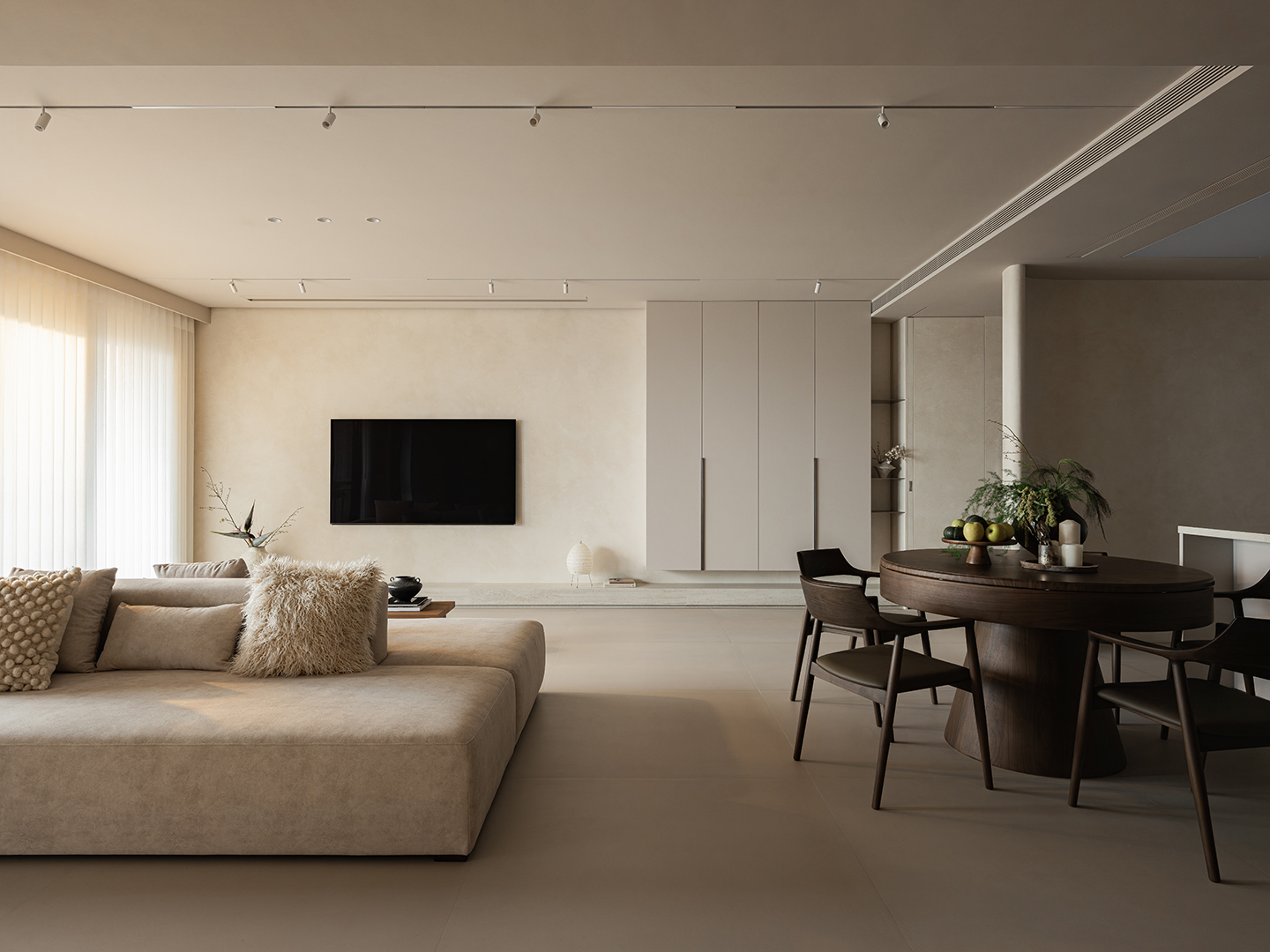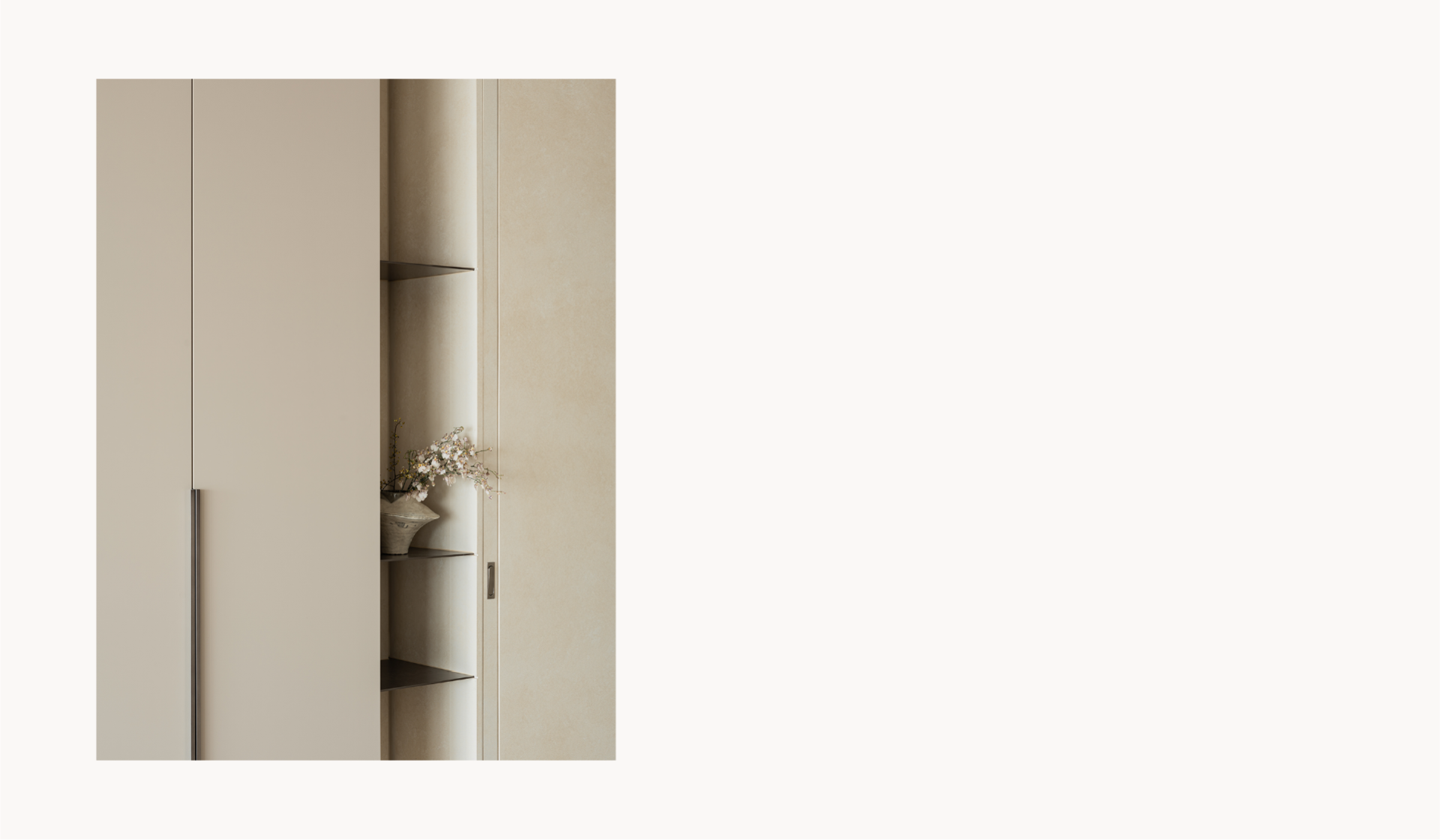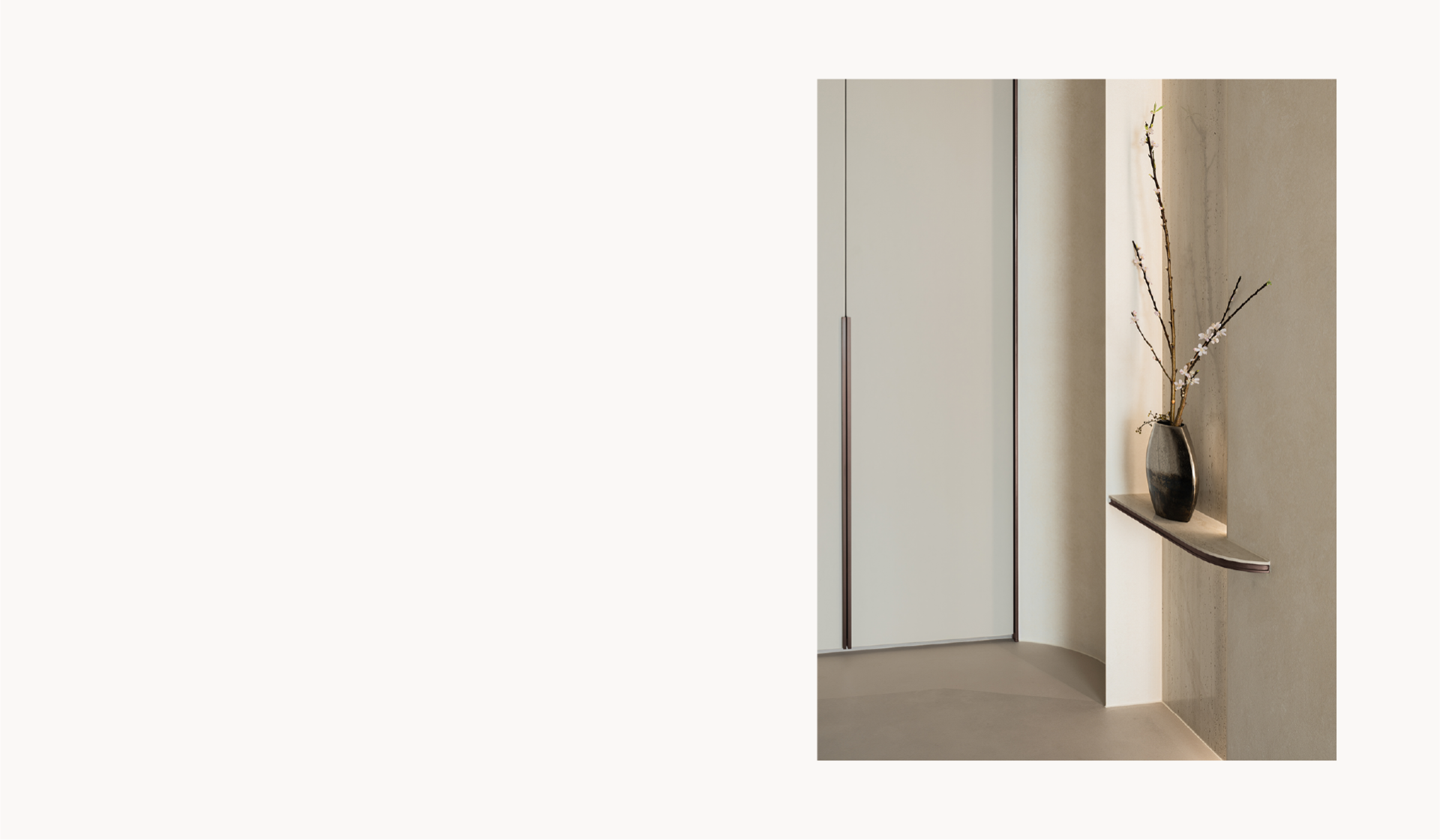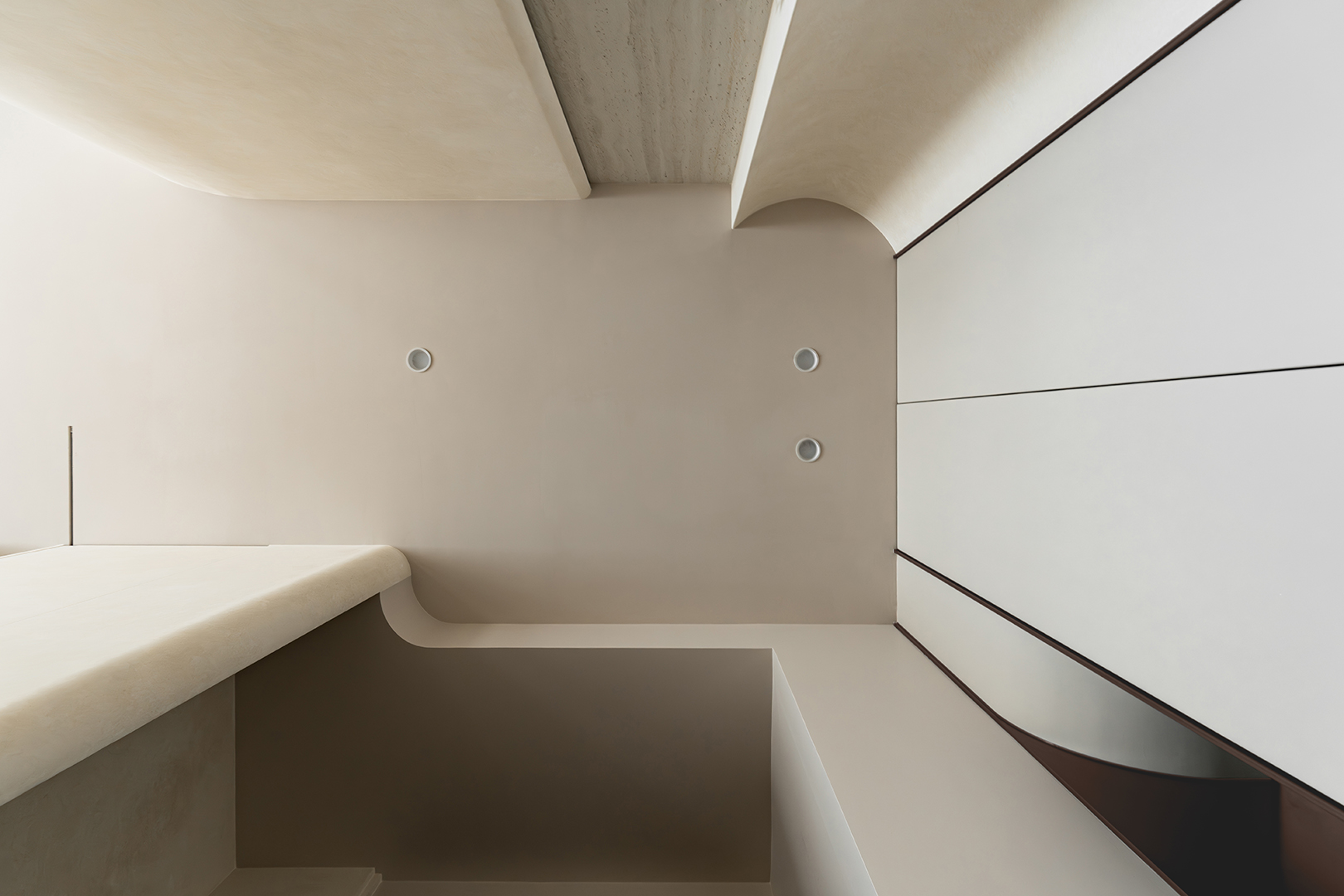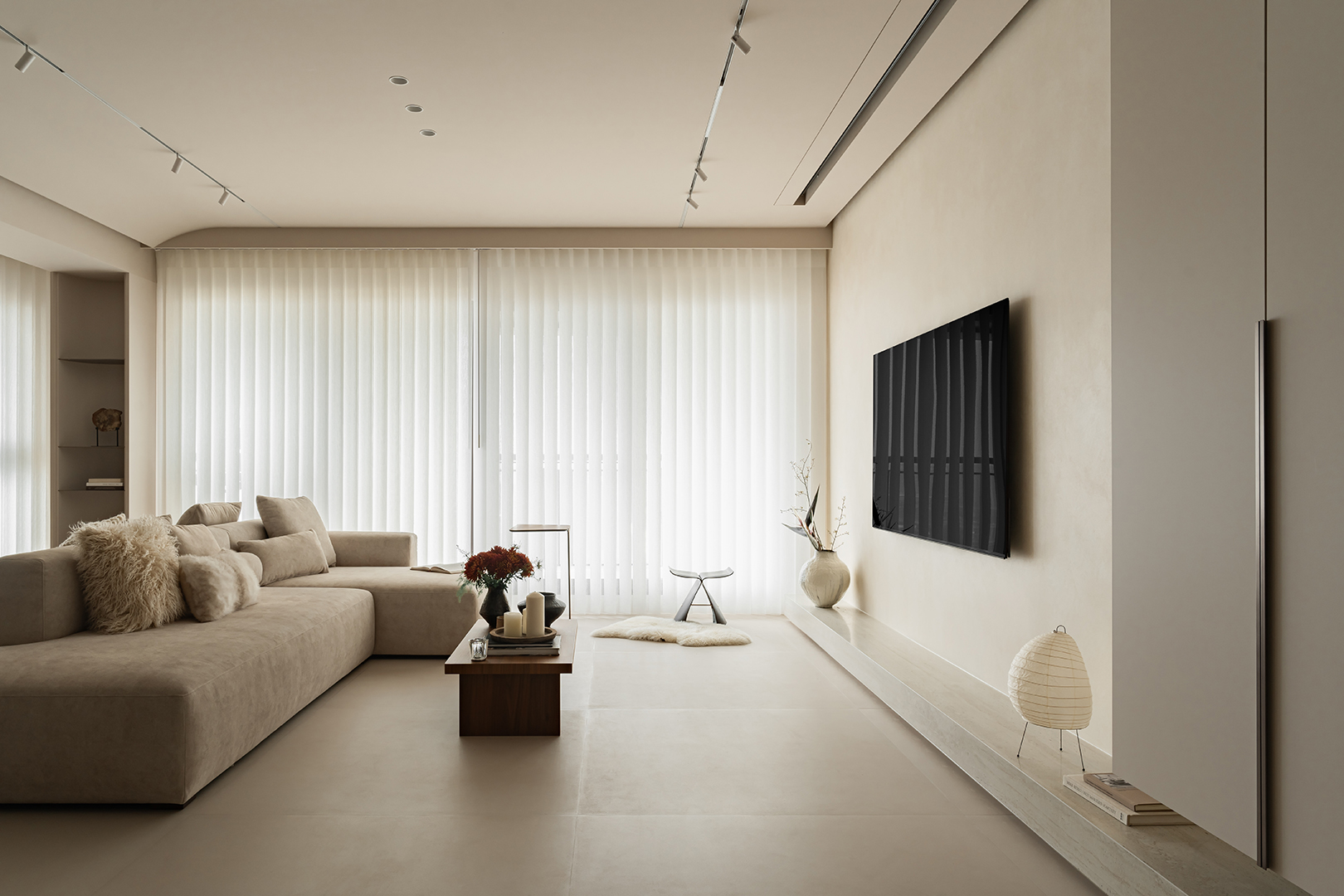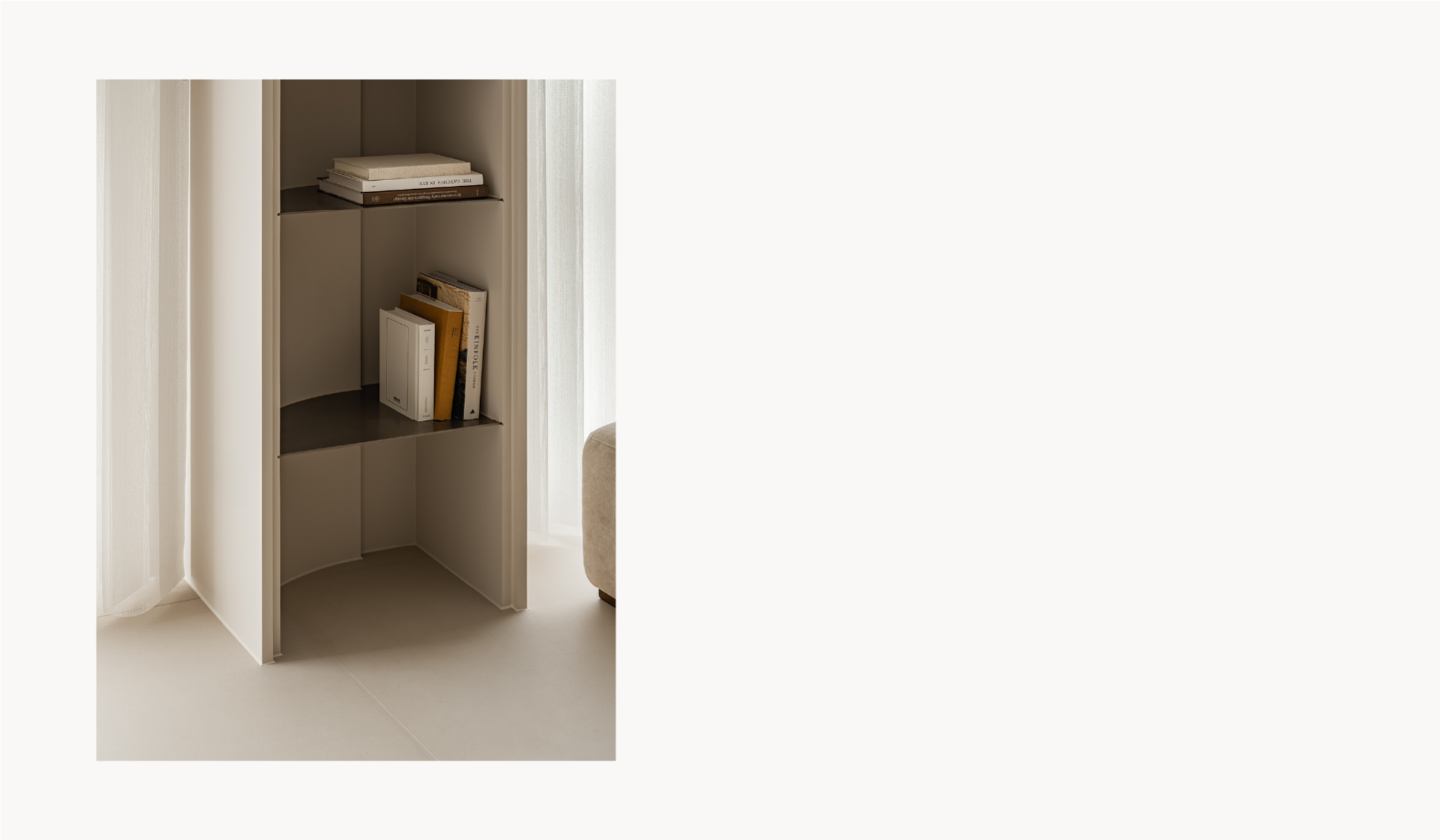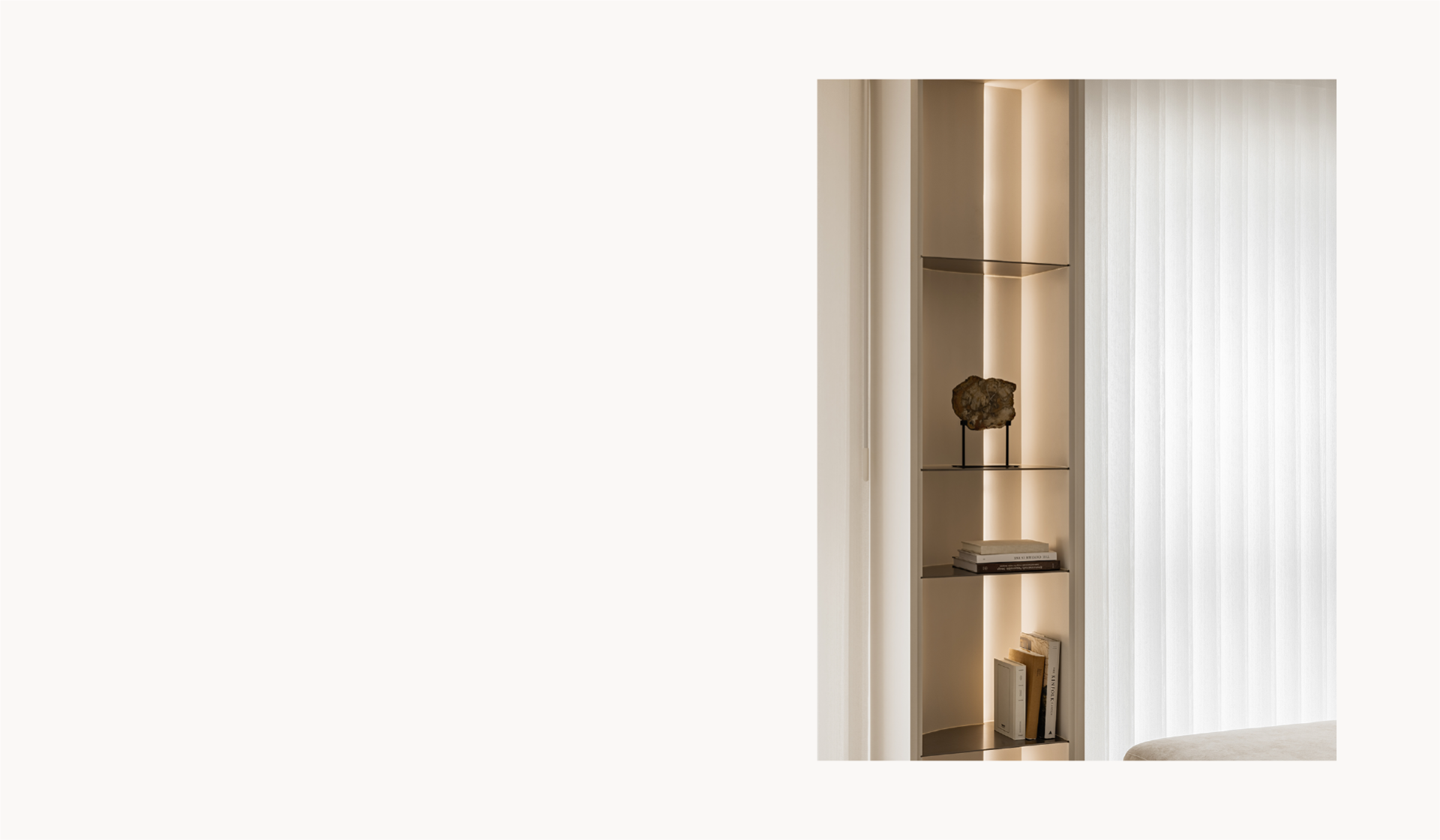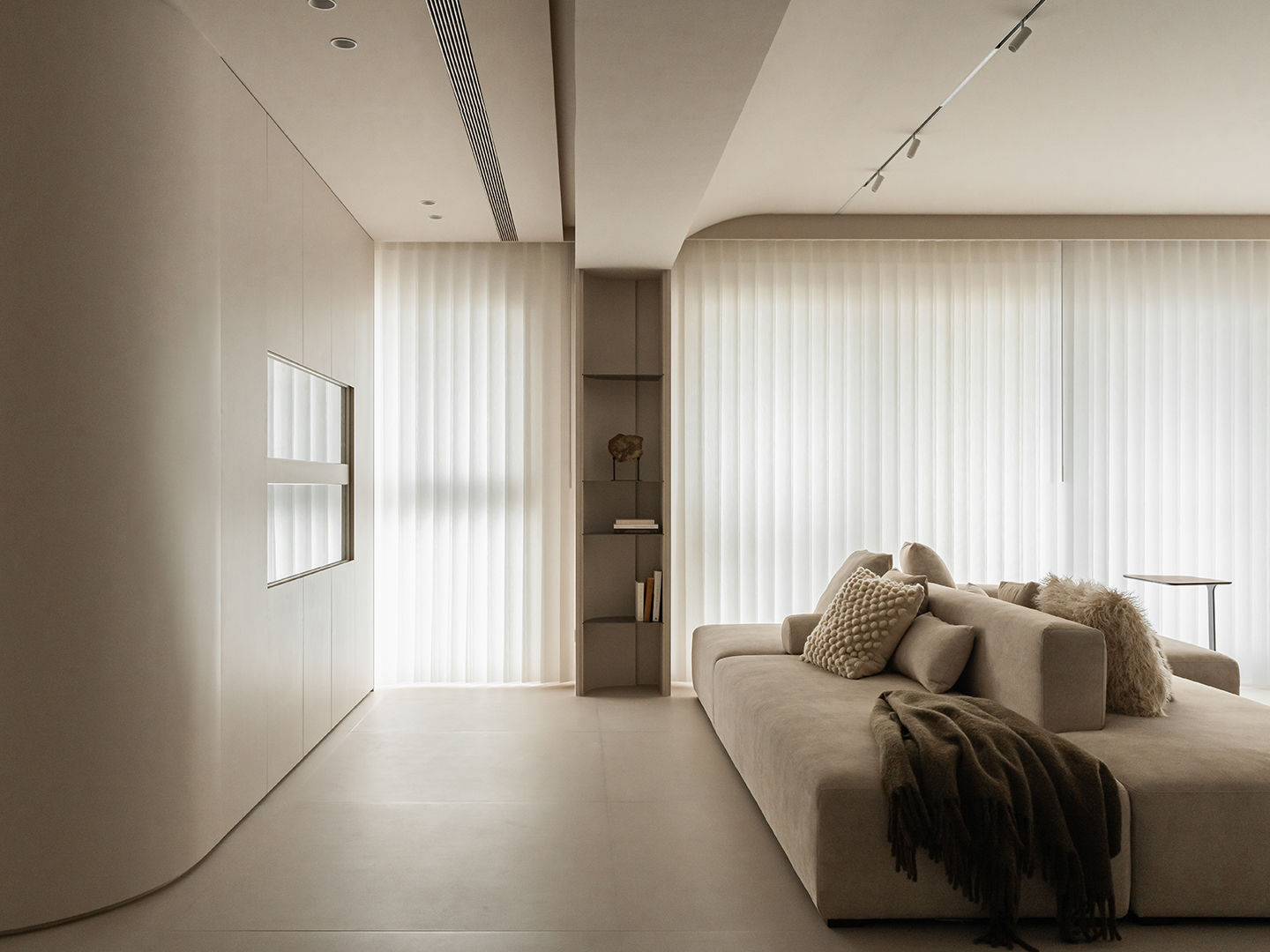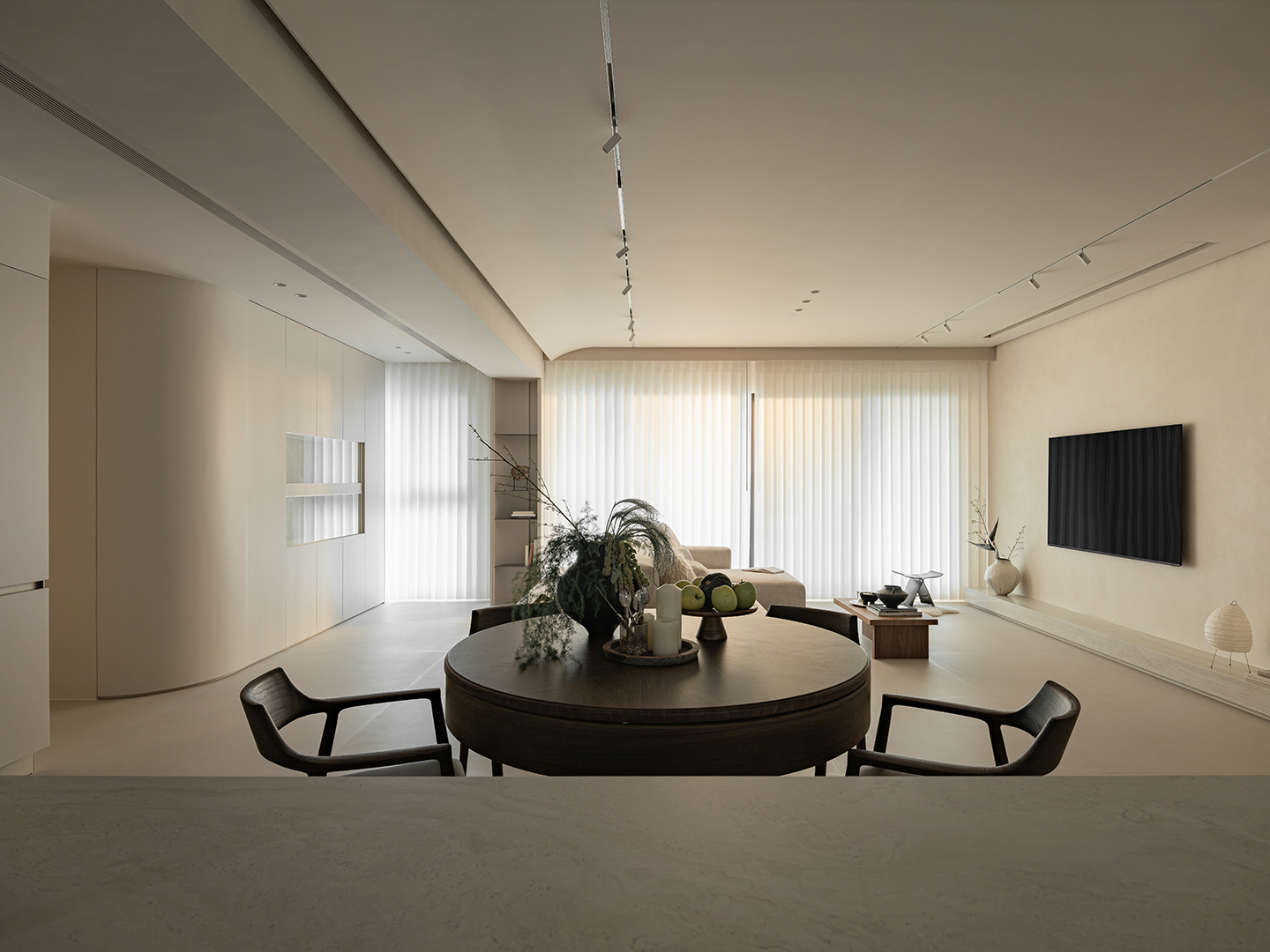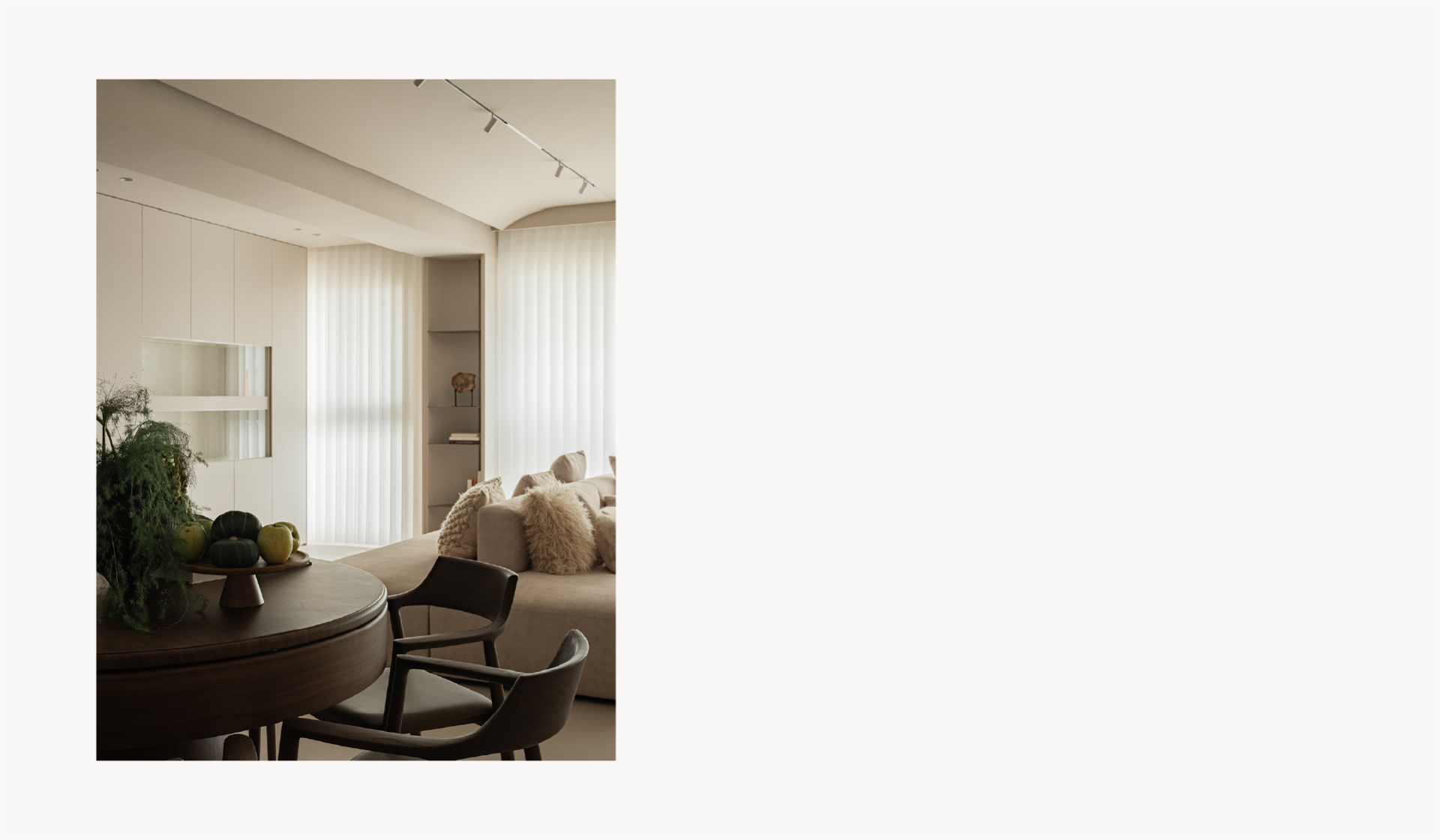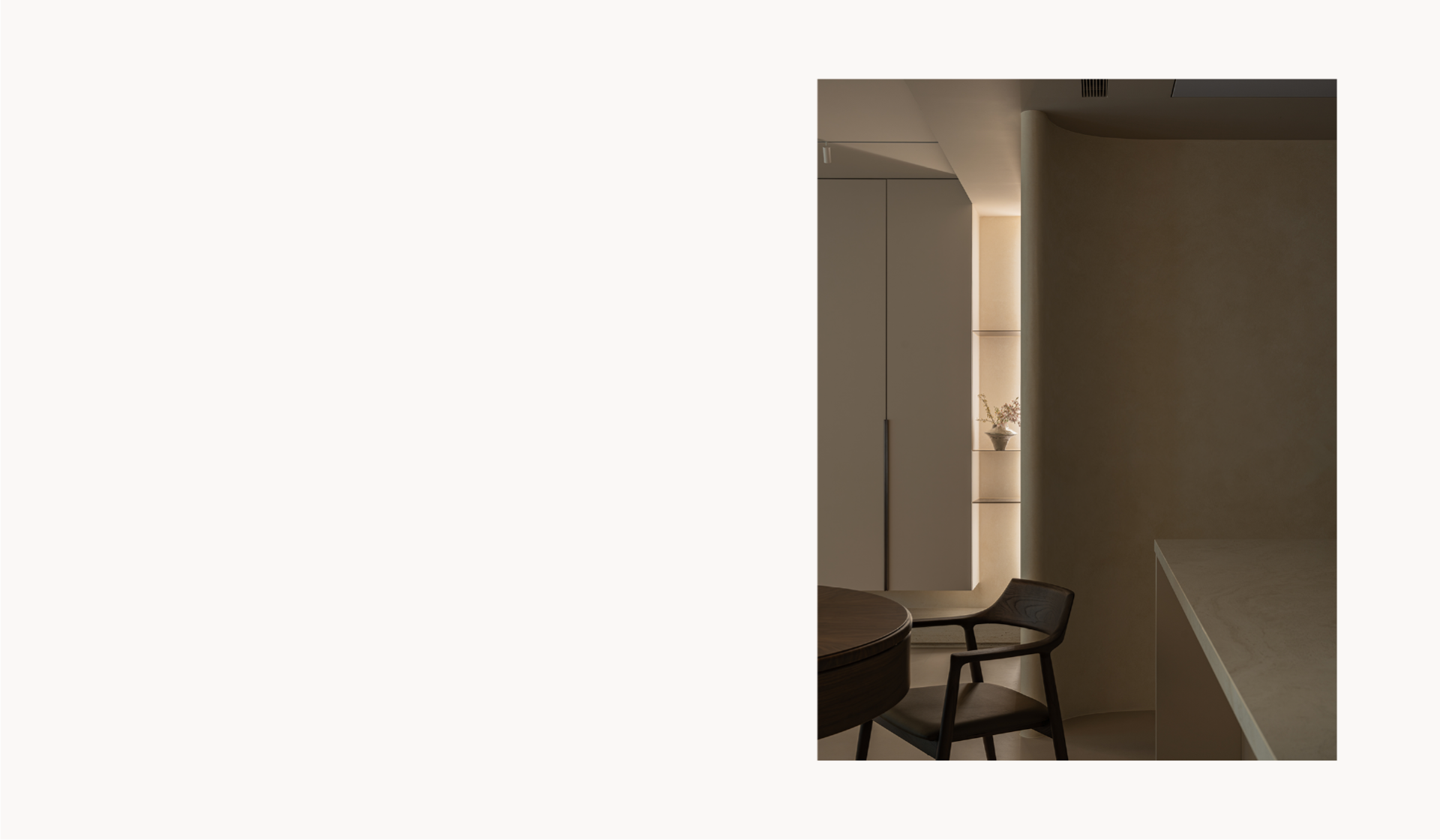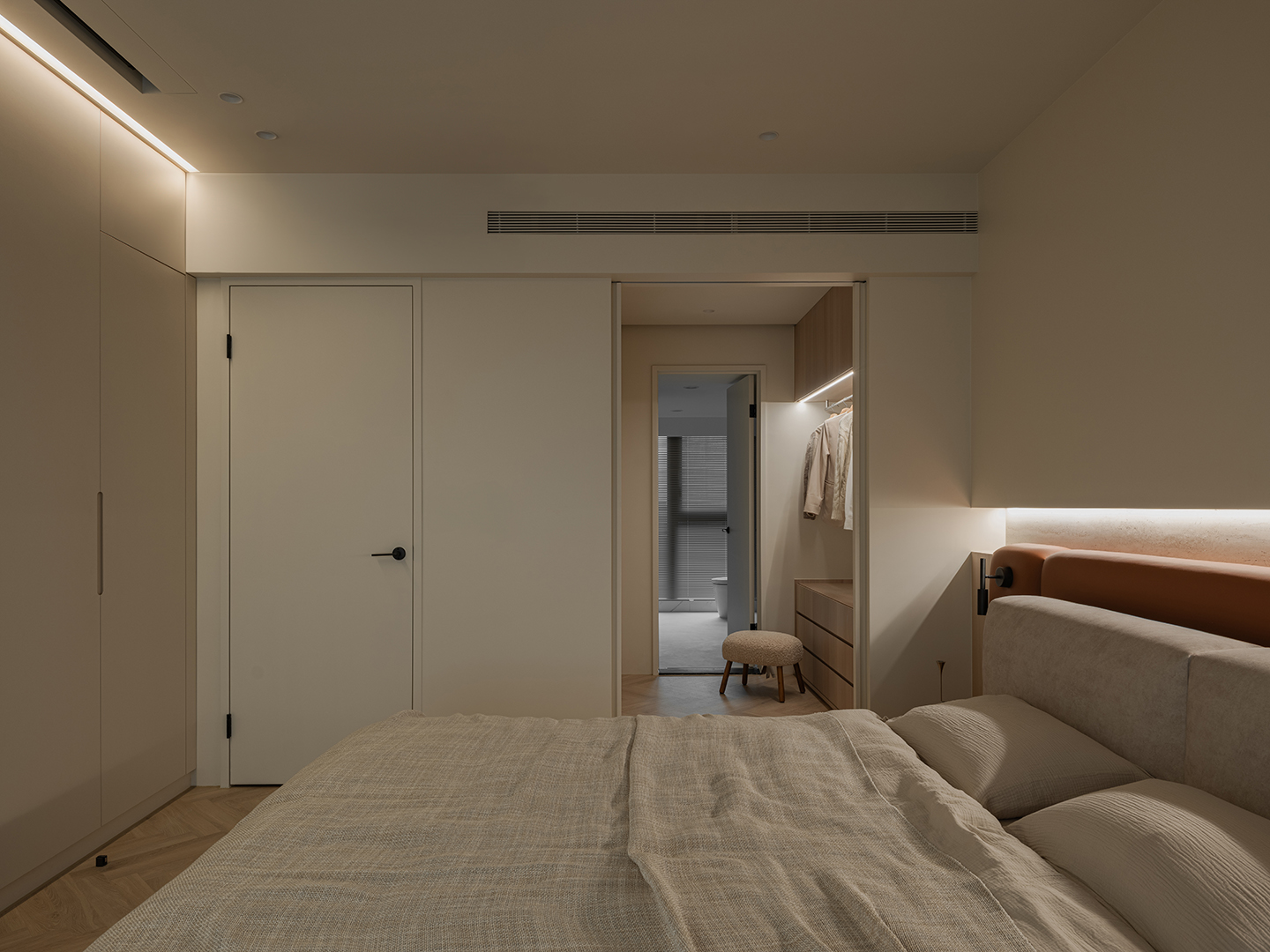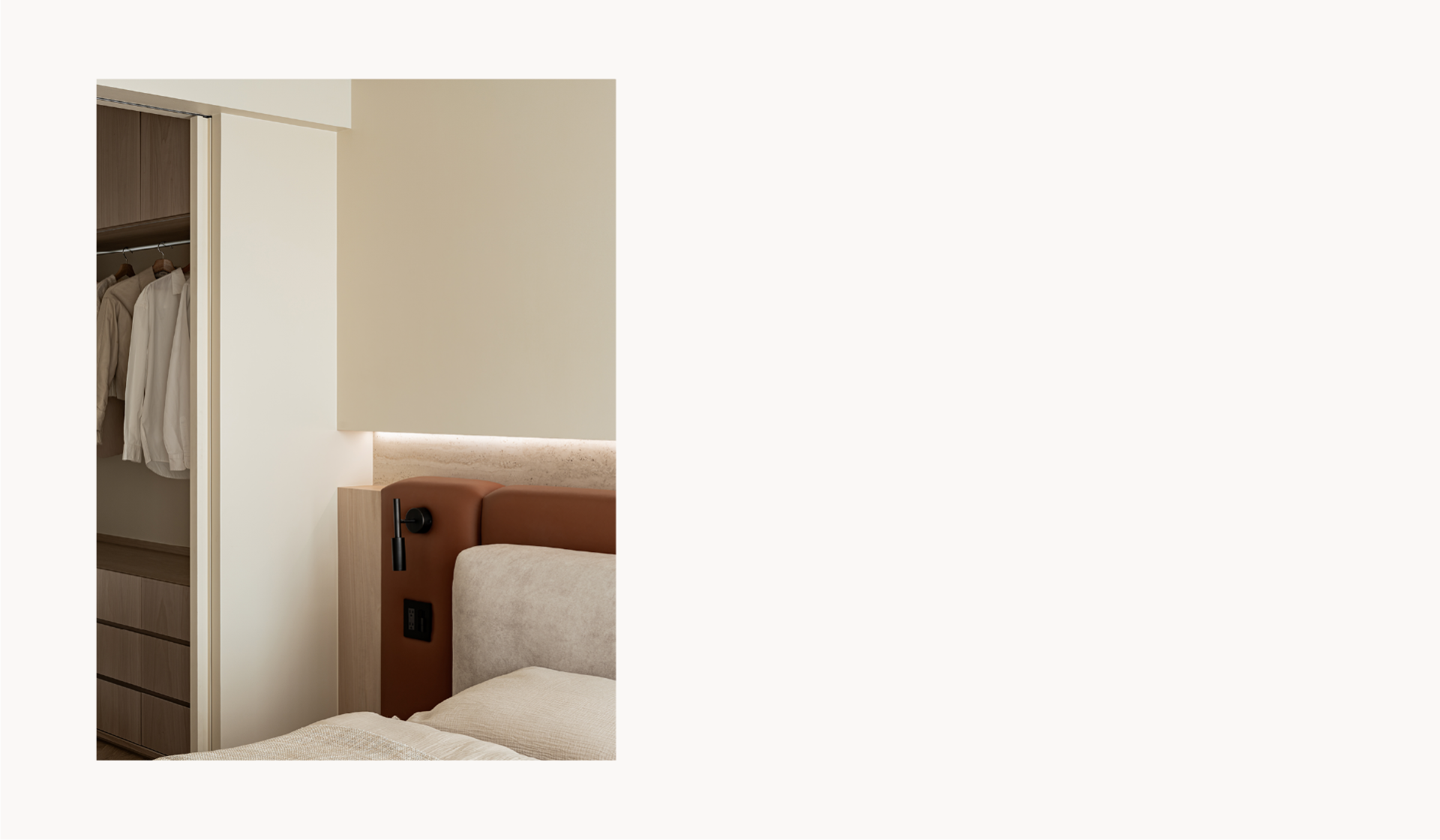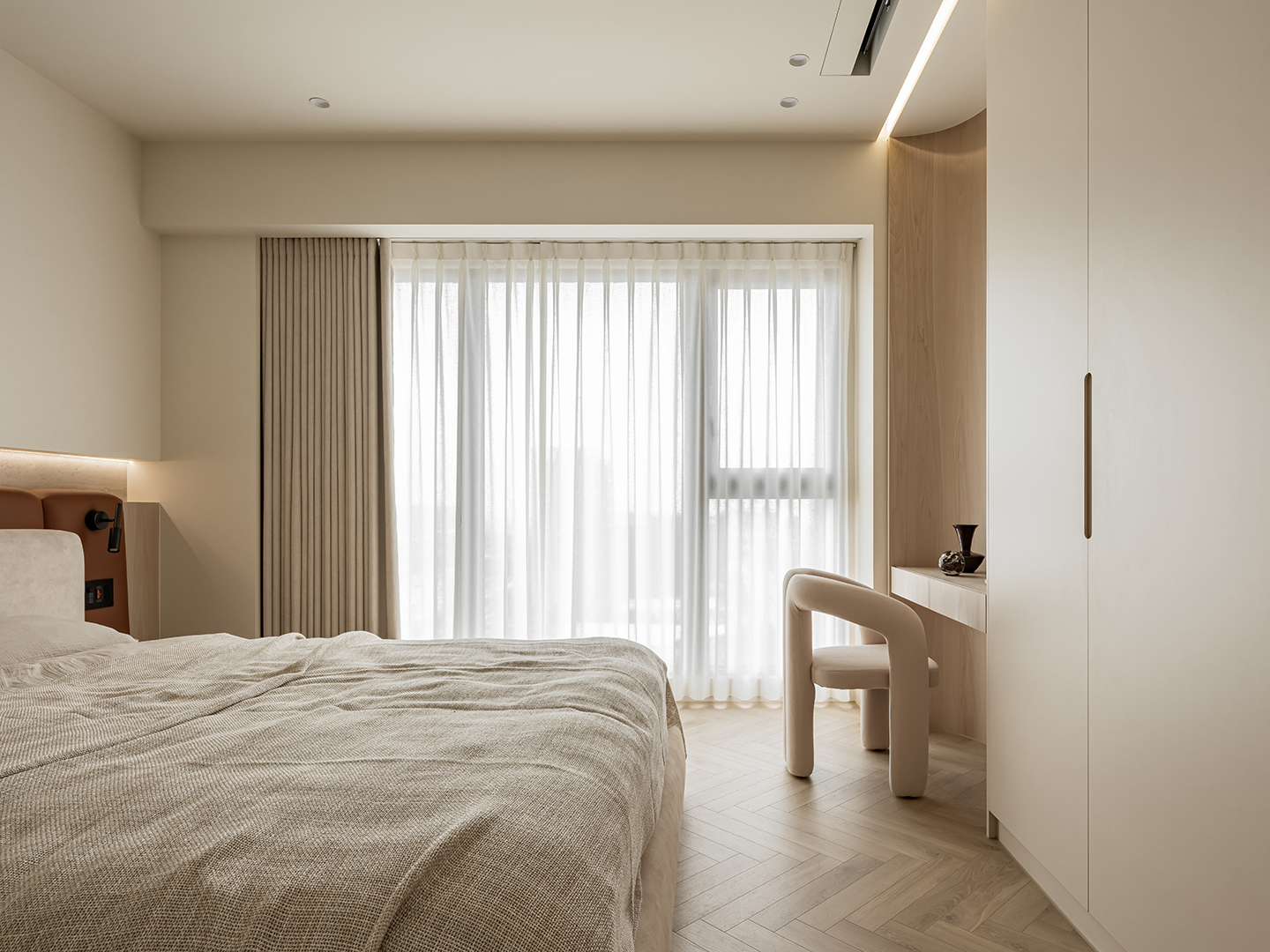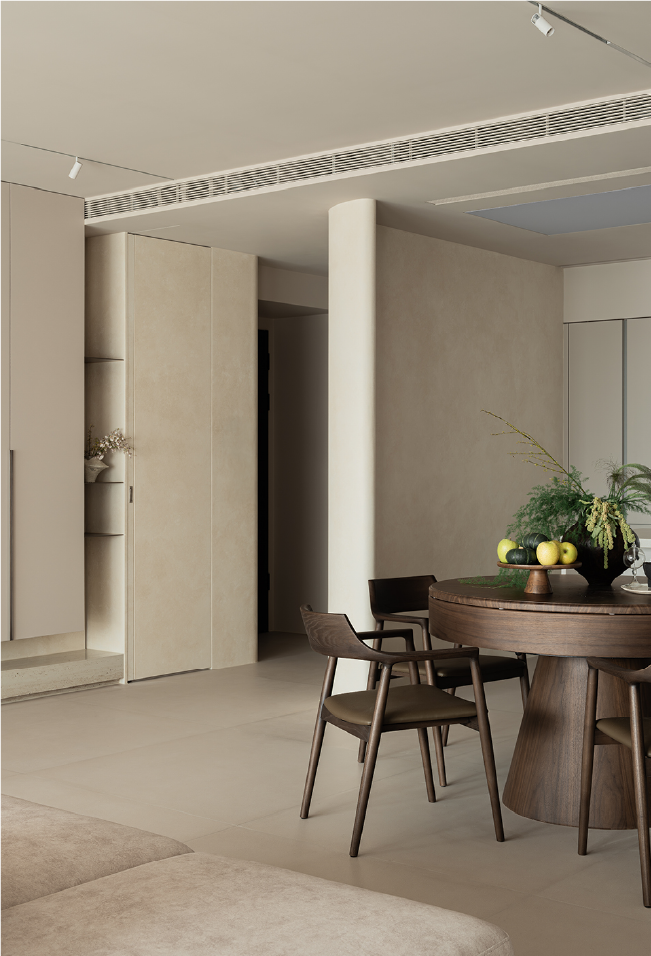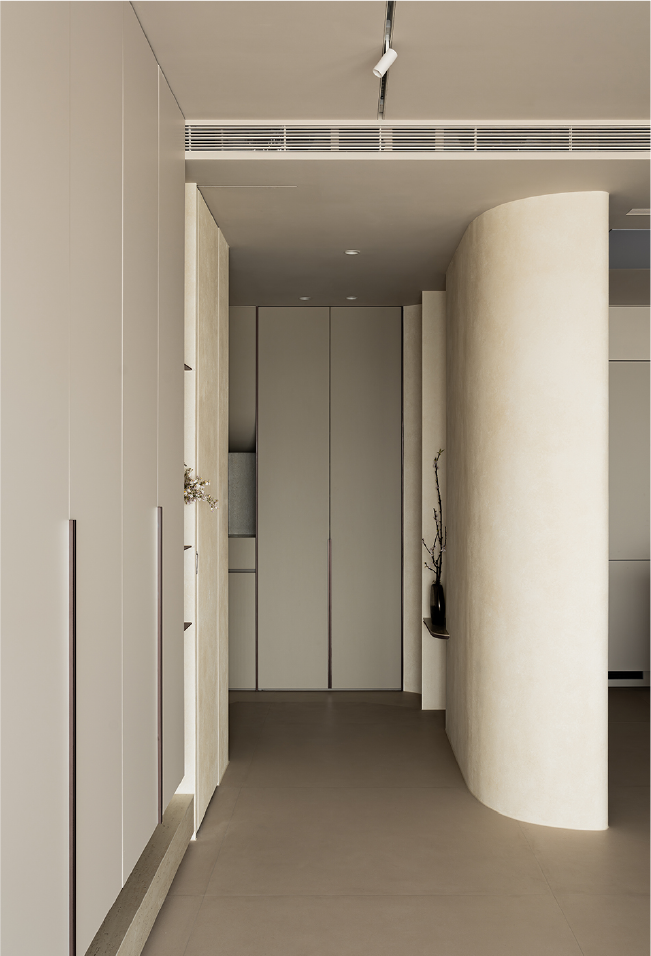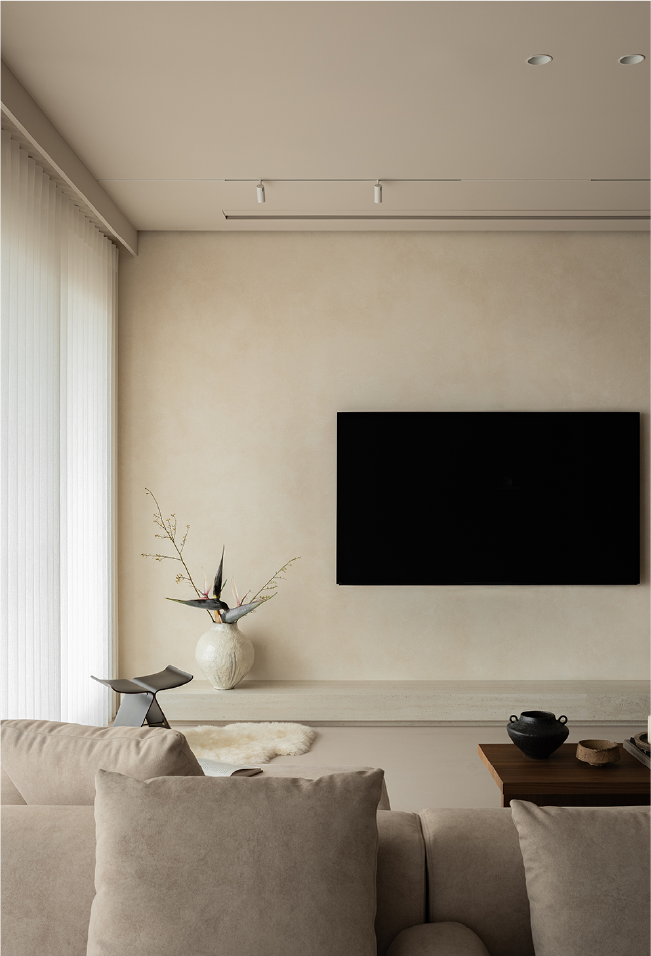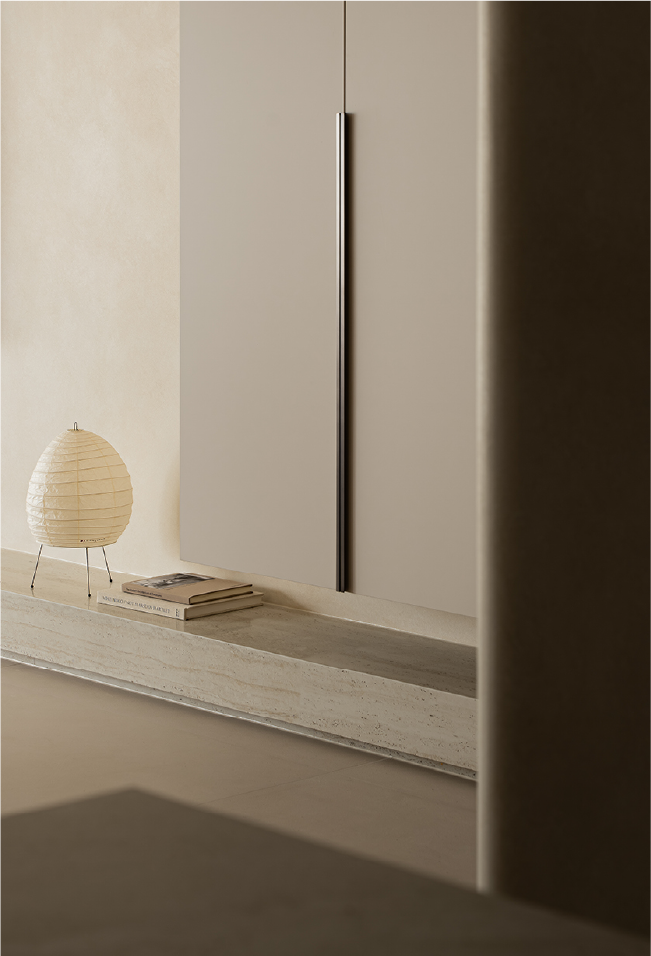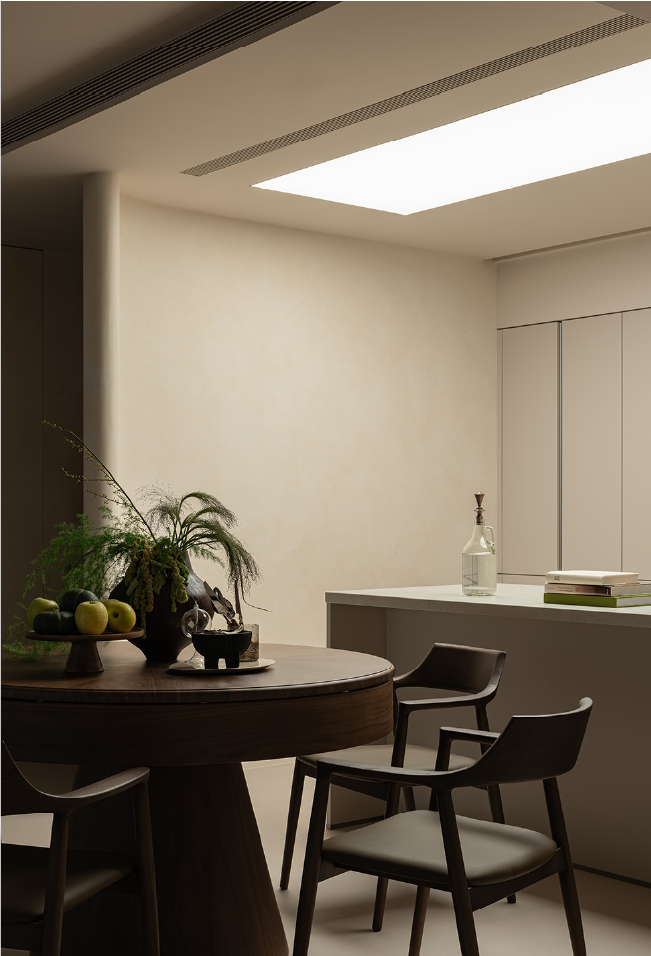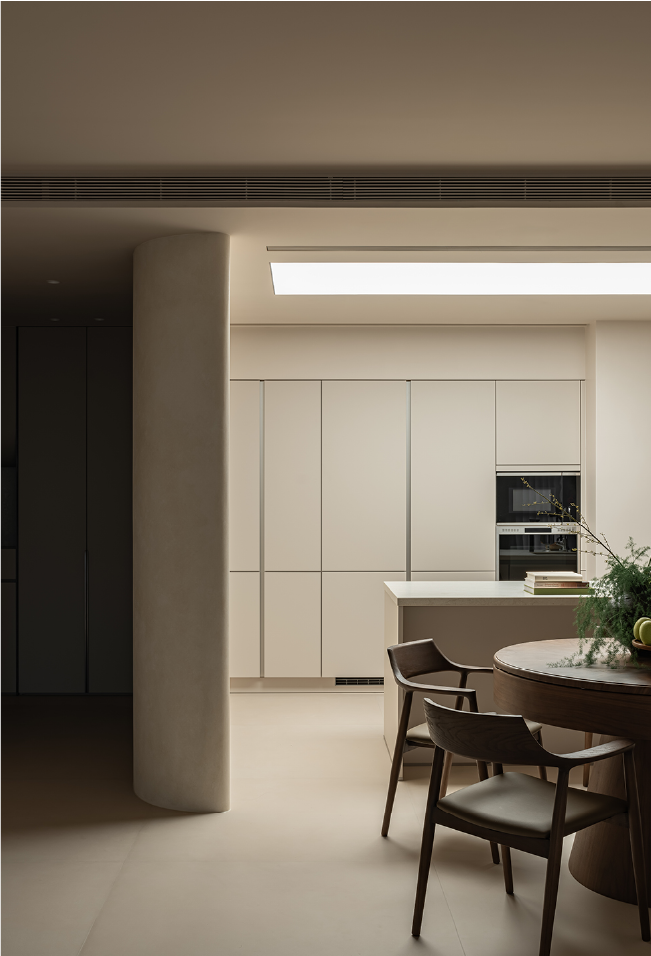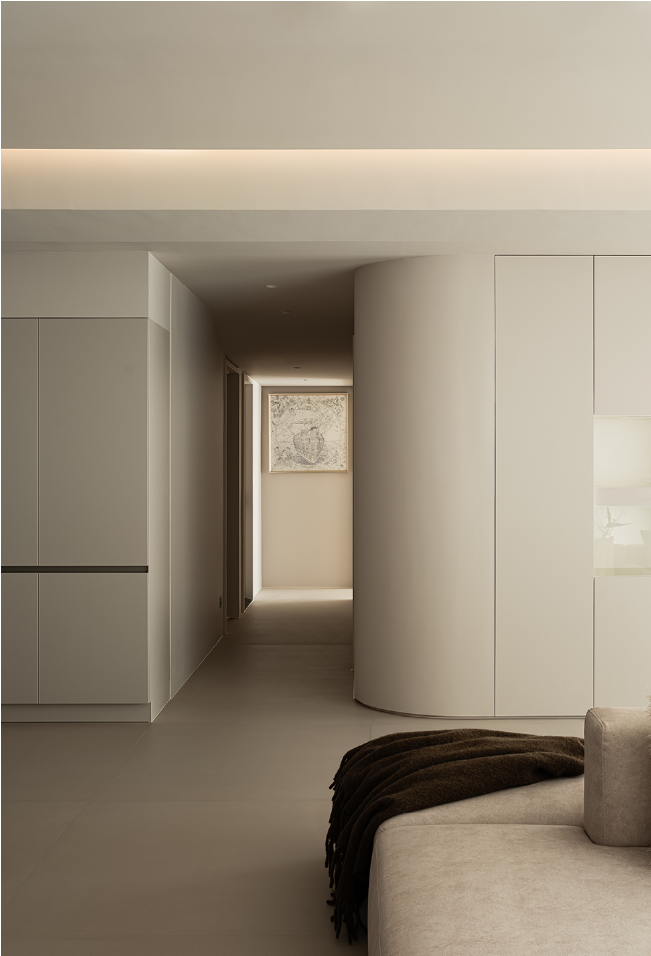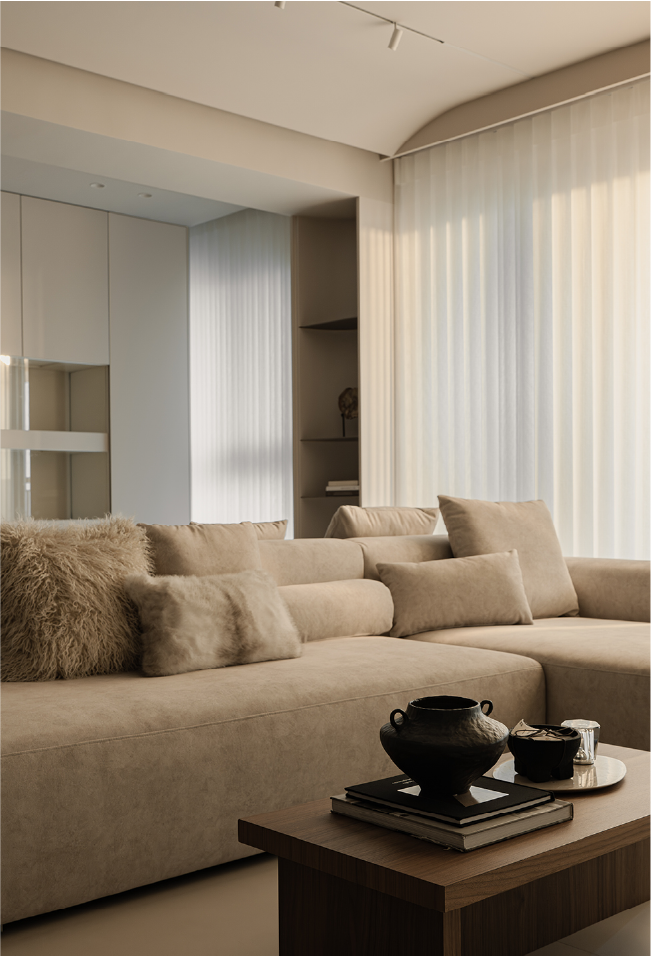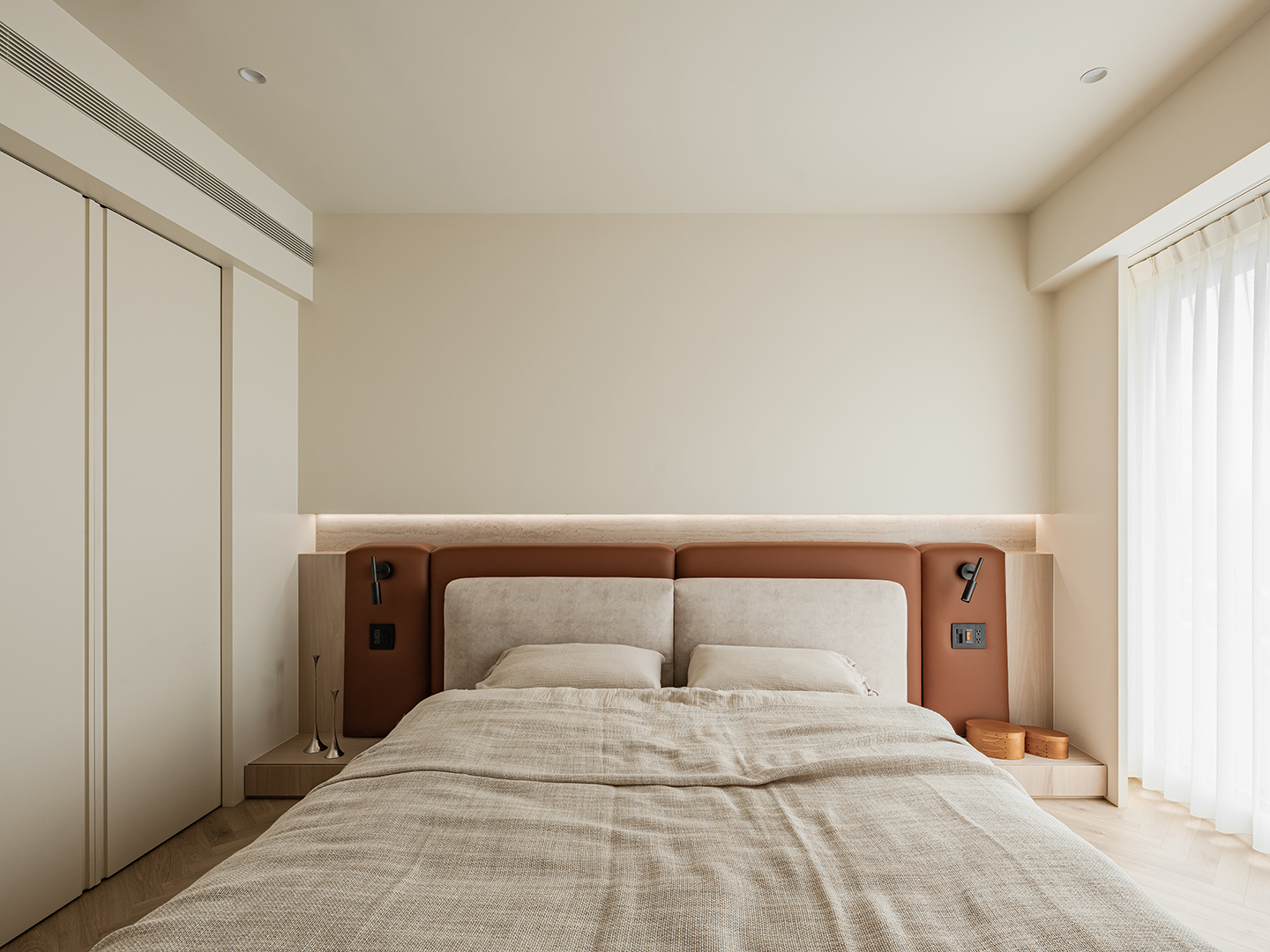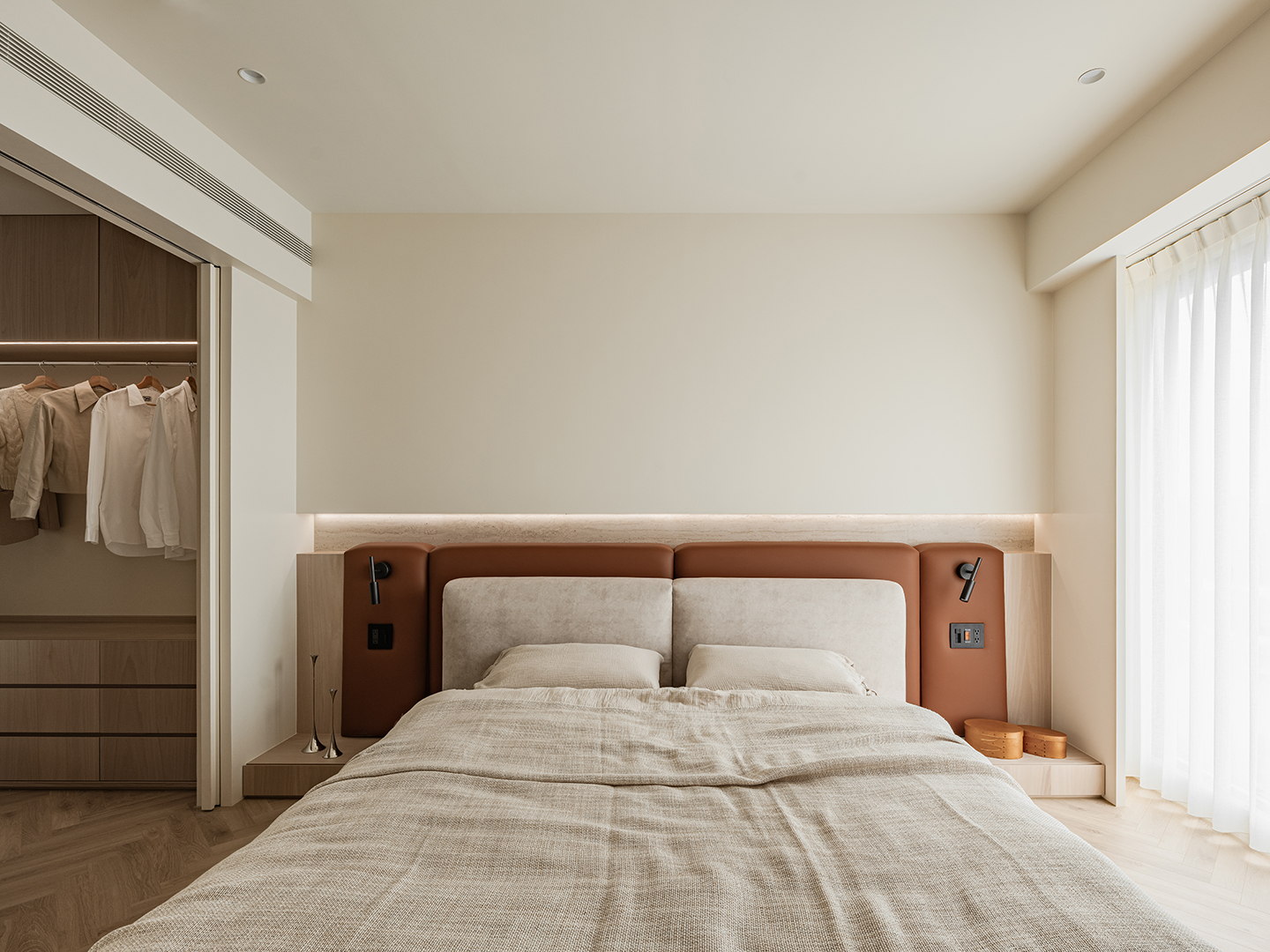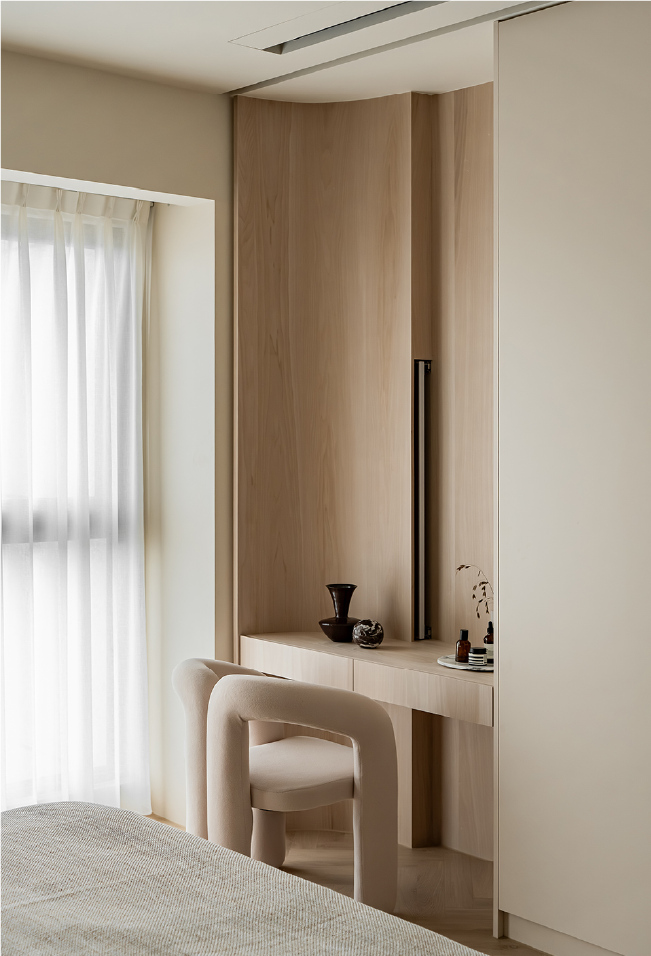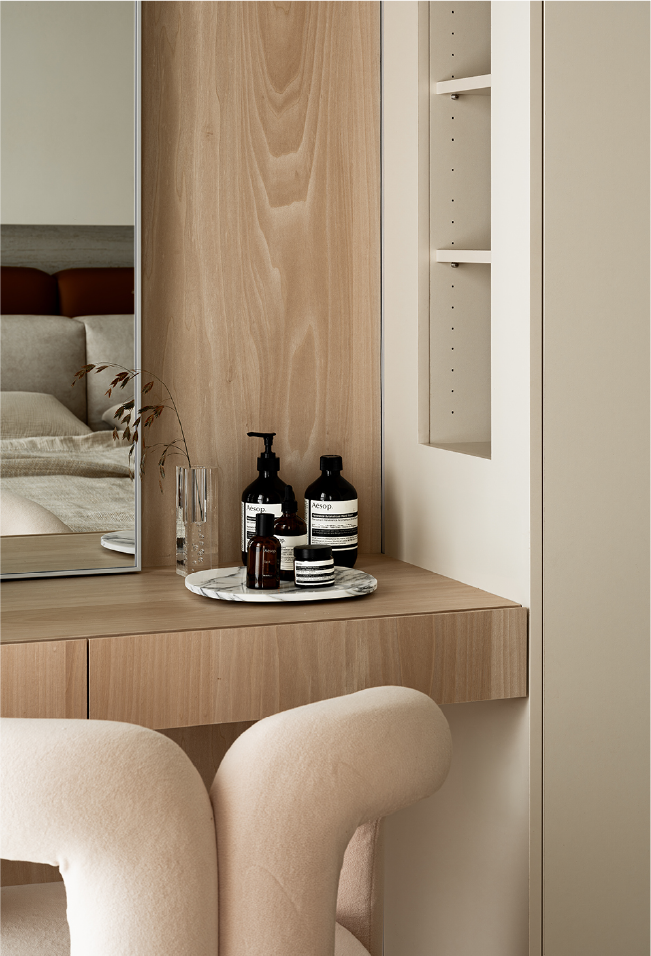Lihao Design Creator 00044
Lihao Design Creator 00044
靜,是一種空間的呼吸方式。
光線輕柔灑落,彷彿每一道陰影都經過細緻安排。空氣中帶著些微溫度,如同午後淺眠前的一口深呼吸。無聲的空間裡,卻能聽見材質與材質之間的低語,那些來自肌理的摩擦與節奏。這不是一個急於說明自身的空間,而是緩慢地等待,等待目光願意停下、心緒願意放緩。溫潤低飽和的色調,自牆面、櫃體延伸至地坪,建立起視覺與情緒的統一性。圓角牆面柔化邊界,讓光與動線自然流動;一切看似不著痕跡,卻又恰到好處,如空間本就該如此生成。
細節處理顯得內斂克制。門片與櫃體選用極簡、線條細長的金屬把手,不求突顯,僅以最輕盈的存在維持秩序與節奏。它們悄然融入整體視覺中,不打擾、不逞強,只在需要之處安靜發聲。家具也延續這樣的語調,深色木質穩定空間重心,與米色絨布、柔霧質感相互對話,不為衝突,而是為了讓光影與觸感在節奏中並置,使每一次停留都成為生活的一種緩慢進行。
空間中的場域轉換輕柔而自然,餐廳、廚房與客廳之間無需明確劃分,透過量體與色塊的過渡完成區隔與串聯。動線鬆弛、感受自由,功能之間彼此銜接,卻不互相干擾。設計在此不以存在感為導向,而是主動退位,讓時間與日常自行在空間中展演。這不再是某種形式語言的展現,而是一種對生活節奏的默許與守候。
美感,不在表象,而在等待中逐漸顯現。藏在陰影的邊界裡、藏在手指觸碰木紋的那一刻、藏在一整天光線的推移之中。這不是一個渴望被命名的空間,而是邀請人慢慢走進、慢慢感受,最終在其中找到某種無需言說的共鳴。
Silence, as a way of inhabiting space.
Light falls gently, as if every shadow has been thoughtfully composed. The air carries a subtle warmth—like a deep breath before drifting into an afternoon slumber. There are no sounds, yet one can almost hear the soft friction between materials. This is not a space eager to explain itself. It waits, quietly, for the eye to linger. A warm, low-saturation palette unfolds across walls, cabinetry, and flooring, forming a cohesive visual rhythm. Curved walls soften the edges of the space, allowing both movement and light to flow with ease. Nothing appears forced; everything feels inevitable, as though the space came into being slowly and deliberately.
Details are addressed with quiet restraint. Cabinetry and doors are fitted with slim, linear metal handles—deliberately understated, avoiding visual interruption. These elements do not seek attention; instead, they quietly support the visual integrity of the whole. Furnishings continue this muted conversation. Deep-toned wood subtly anchors key pieces, while beige upholstery and softly textured surfaces contribute warmth and lightness. Rather than contrast, materials here engage in a calm exchange—light and texture folding into each other with gentle cadence.
Transitions between kitchen, dining, and living areas are seamless. There are no sharp borders—just tonal shifts and spatial breathing room. Each zone retains its function while participating in a shared language of softness and proportion. Movement feels unforced and intuitive. The design itself steps aside, allowing space to become a vessel for time, light, and daily ritual. One does not simply observe the space; one moves through it slowly, inhabiting its quiet logic.
Beauty here is not immediate—it is revealed. It lives in the shadow lines, in the grain of wood beneath fingertips, in the subtle shifts of light from hour to hour. This is not a space that demands to be defined. Instead, it invites dwelling—gently, attentively—until its language is felt rather than understood.
